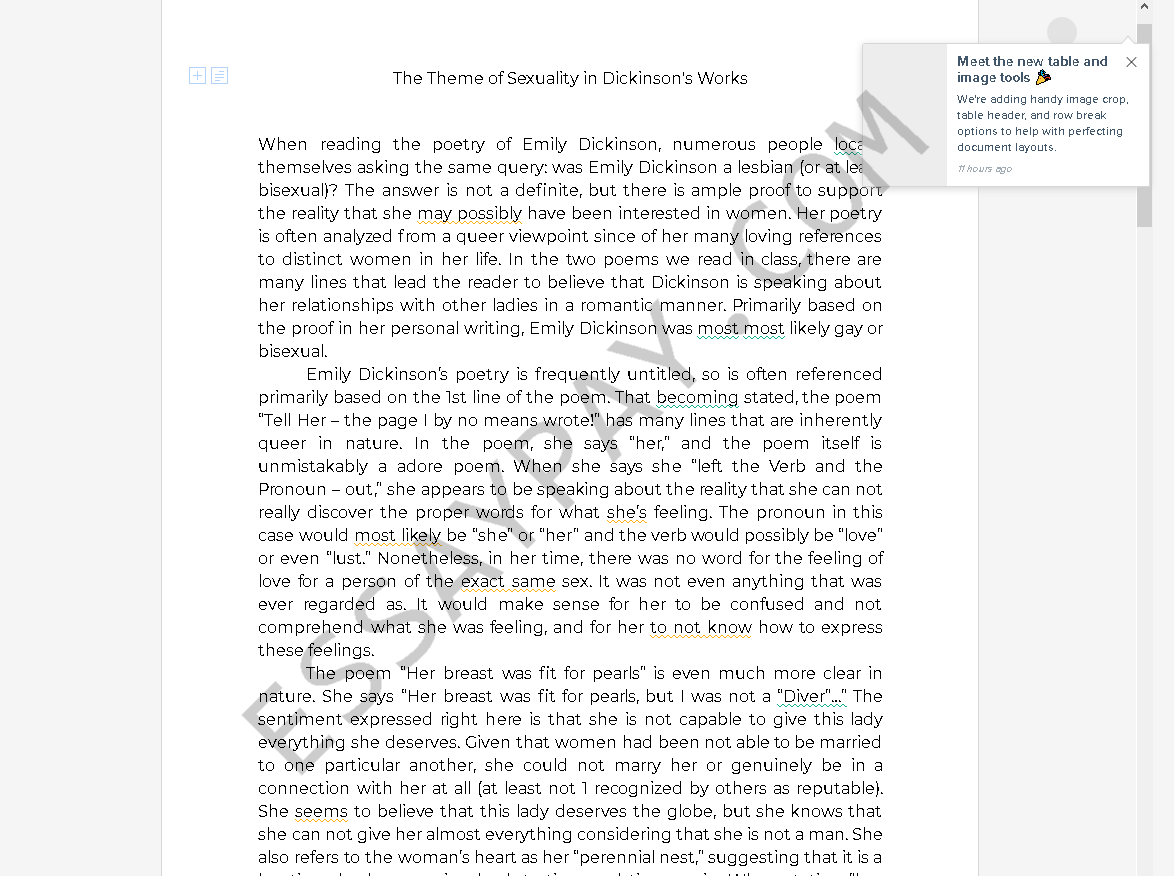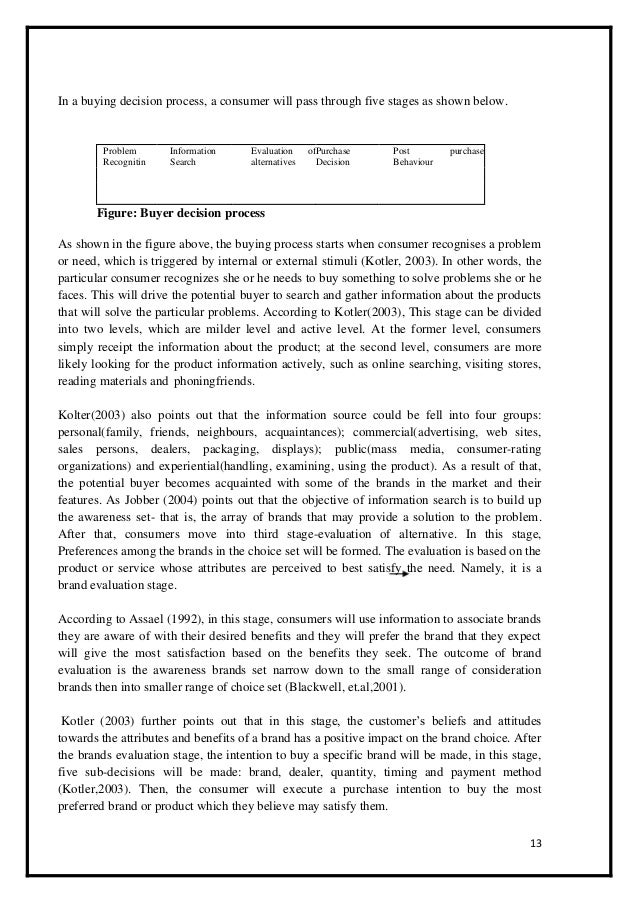
Essay. One Class, 36, Students. By Elliott Holt. Can a MOOC teach poetry? Read More. More Poems by Emily Dickinson “Hope” is the thing with feathers - () By Emily Dickinson. The Bustle in a House () By Emily Dickinson. It was not Death, for I stood up, () By Emily Dickinson Oct 28, · In addition to a Rosary for the faithful departed, a scary movie, and trick-or-treating with children, consider this eerie and arresting little verse from by American poet, Emily Dickinson Emily Dickinson's Poetic Methods Most of Emily Dickinson's poems are written in short stanzas, mostly quatrains, with short lines, usually rhyming only on the second and fourth lines. Other stanzas employ triplets or pairs of couplets, and a few poems employ
Emily Dickinson - Wikipedia
The season of souls is upon us, marked with playful front-porch ghosts and ghouls, prayerful cemetery remembrances, and all things spine-tingling, mind-shaking, and funereal. It is a chipper, cheerful time of emily dickinson essay, despite the deathly themes that festoon our living spaces. I felt a Funeral, in my Brain, And Mourners to and fro Kept treading — treading — till it seemed That Sense was breaking through —. And when they all were seated, A Service, like a Drum — Kept beating — beating — till I thought My mind was going numb —, emily dickinson essay.
And then I heard them lift a Box And creak across my Soul With those same Boots of Lead, again, Then Space — began to toll. As all the Heavens were a Bell, emily dickinson essay, And Being, but an Ear, And I, emily dickinson essay, and Silence, some strange Race, Wrecked, solitary, emily dickinson essay, here —. And then a Plank in Reason, broke, And I dropped down, and down — And hit a World, at every plunge, And Finished knowing — then —. This is a nightmarish little poem that teeters precariously on the edge of a metaphor of mental collapse—a emily dickinson essay that all are prey to insofar as they have a funeral of some sort in store.
Here, the funeral mentioned may be one for the demise of a mind, creeping along and gathering inevitable, overpowering momentum, plunging into either the mouth of madness or despair. Whatever it alludes to, this poem certainly occupies a dark corner, but Emily Dickinson was something of a dark soul. Whether by madness or mortality, we will all lose our grip in time and will descend beneath the silent gaze of mourners.
These ghostly lines float and fall with the impending sense of death that we all have as those who must die. We have all had a dim, dreamy impression of a funeral in our brain, either of one we attended or one that we anticipate, but to suddenly have that funeral solidify into a reality centered around us is a thing for the horror stories. Most people prefer to keep that emily dickinson essay as vague and distant as possible.
So, emily dickinson essay someone unexpectedly find themself in attendance at their own funeral—and not it the ironic way that Tom Sawyer did—it could easily involve a sensation that would be disquieting, to say the least. For the narrator in the poem, the consciousness of a strange funeral with mourners that tread with leaden boots back and forth to the beat of a drum comes crashing into the reality of her own funeral, breaking through the floors of all the worlds in a freefall into oblivion—or conclusion—or completion—or something else, perhaps.
Death comes for all, and emily dickinson essay many, like a thief in the night, when they are least expecting it. Death can and should be that homecoming, even if it means breaking through worlds to get at that great beyond where there are no more tears, no more sighing, no more pain, emily dickinson essay.
Death is not necessarily a doom, emily dickinson essay. In our day, death is either an unmentionable in need of euphemisms and platitudes, or else it is a tyrant of screaming, secular horror, emily dickinson essay.
Death is held in one of two cultural attitudes: denial or domination. Both extremes have something in common, though: fear.
While Death should not be fearfully ignored or fearfully exalted, emily dickinson essay, we must be in touch with the reality of death if we are to live forever. Somewhere in the middle of death-denial and death-domination lies the human relation with death: the acknowledgement of what death must be and what it must bring.
This median experience is what the extremes miss by a mile. If that middle ground is ever recovered, we would inter their dead with spades again instead of leaving the task to impersonal backhoes. Do we truly bury the dead, as the corporal work of mercy commands? It is a good question. And one that is worth asking in a society segregated from the rites and realities of death, even as they struggle with the wages of sin, as though in mute denial or raging submission of some unbearable fact.
No matter how self-destructive the world is, people still want to live forever as the ancients did—that desire is the basis of all philosophy and theology. Death must, emily dickinson essay, when all is said and done, play the right part in that desire for eternal life if it is to be fulfilled. We must learn to laugh at death, and not let him have the final word.
It can be understood as emily dickinson essay breaking off to denote the everlasting unknown, or a finality that is everlastingly whole as the visions of reality become ever broader even as they come together. Which will it be for you—then? If you value the news and views Catholic World Report provides, please consider donating to support our efforts.
Your contribution will help us continue to make CWR available to all readers worldwide for free, without a subscription. Thank you for your generosity! Click here for more information on donating to CWR.
Click here to sign up for our newsletter, emily dickinson essay. Alas, it emily dickinson essay that time of year again when certain suburban moms across America log onto the neighborhood Facebook group to request that Halloween trick-or-treating be moved to a different day so that their kids […].
Mary weeps at the foot of the cross, and we weep with her. But we also must not stop there. For beyond the cross of […]. An obvious and correct answer is that […]. All comments posted at Catholic World Report are moderated.
While vigorous debate is welcome and encouraged, please note that in the interest of maintaining a civilized and helpful level of discussion, comments containing emily dickinson essay language or personal attacks—or those that are deemed by the editors to be needlessly combative or inflammatory—will not be published. Thank you. Sign up to receive a weekly email with news, analysis, and commentary from a voice you can trust!
News Briefs. death Emily Dickinson. About Sean Fitzpatrick 13 Articles. Sean Fitzpatrick is a graduate of Thomas Aquinas College and serves on the faculty of Gregory the Great Academy in Elmhurst, Pennsylvania. He teaches Literature, Mythology, and Humanities. He lives in Scranton with his wife, Sophie, and their seven children. Previous Parental notice repeal puts unborn children and young girls at risk, Illinois critics say.
Next A Letter to a Priest in Crisis. October 27, Rachel Hoover The Dispatch. April 10, Dr. Randall B. Smith 2. September 25, Carl E. Olson Leave a Reply Cancel reply Your email address will not be published.
Email Frequency Daily.
An Introduction to THE DASH \u0026 Emily Dickinson (pit-stop punctuation)
, time: 6:56A funeral feeling from Emily Dickinson – Catholic World Report
Essay. One Class, 36, Students. By Elliott Holt. Can a MOOC teach poetry? Read More. More Poems by Emily Dickinson “Hope” is the thing with feathers - () By Emily Dickinson. The Bustle in a House () By Emily Dickinson. It was not Death, for I stood up, () By Emily Dickinson May 07, · Emily Dickinson left school as a teenager, eventually living a reclusive life on the family homestead. There, she secretly created bundles of poetry and wrote hundreds of letters May 06, · Walt Whitman and Emily Dickinson. Walt Whitman and Emily Dickinson were two very contrasting poets that wrote during the writing period of the American Renaissance between and This period happened around the end of the Civil War, and many of Whitman’s writings had to do with it, such as “A Sight in Camp in the Daybreak Gray and

No comments:
Post a Comment